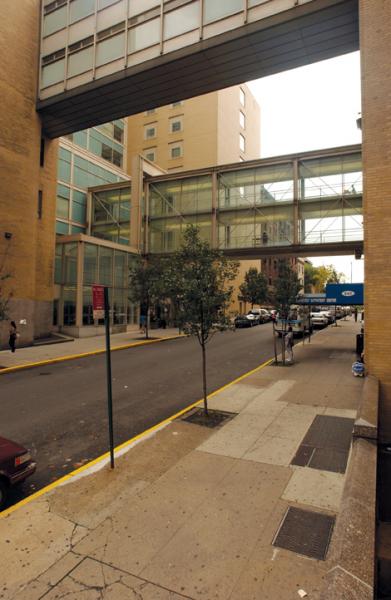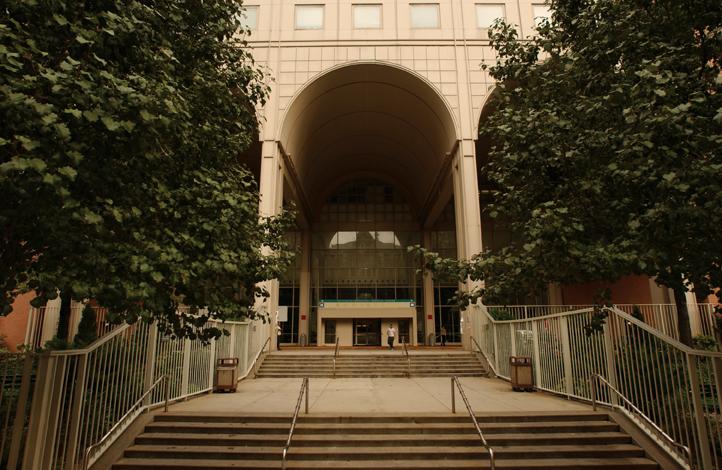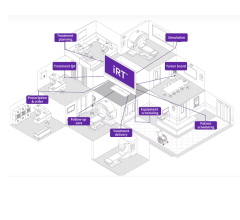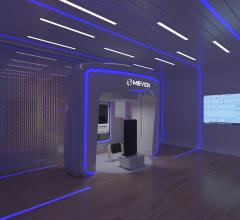
The Continuum Cancer Centers operate out of two major medical centers, including Beth Israel Medical Center.
Editor’s note: Imaging Technology News (ITN) sought reader nominations for the top cancer centers to watch in 2013, based on use of technology in radiation oncology. Key factors considered included how new technologies are being used to help improve patient outcomes, increase efficiency, reduce costs, increase patient volume, or increase reimbursements/revenues. ITN received a record number of entries, and from these, narrowed them to seven top centers that are striving to make a difference in patients’ lives. ITN congratulates these facilities for their achievements, and will feature a new center in each issue in the months ahead. Thank you to everyone who shared their stories of success with us.
When Hurricane Sandy struck the East Coast in late October 2012, the Continuum Cancer Centers of New York was in the process of integrating its databases into one unified system. The project was part of an initiative to greatly increase patient safety and quality of care across its facilities, which were spread out over various locations in Manhattan. Fortunately for them, the push for integration proved to be invaluable that fall, as other hospitals in the city scrambled to recover in Sandy’s aftermath.
“Practically speaking, we were shut down for a week at our downtown location,” said Eli Furhang, Ph.D., DABMP, corporate director of medical physics at Continuum Cancer Centers of New York. “The beauty of integration enabled us to simply inform our patients that we will be treating them at our other facilities. It was our reliance on technology that enabled us to do this.”
Striving for Uniformity
The Continuum Cancer Centers operate out of two major medical centers, Beth Israel Medical Center and St. Luke’s-Roosevelt Hospital Center, with four sites total in which cancer patients are treated. One site, St. Luke’s Hospital, is located in the city’s Upper West Side, while the Beth Israel locations are in Lower Manhattan. A separate site, Roosevelt Hospital, sits on 10th Avenue. Each facility contains at least one linear accelerator (linac), according to Furhang; other technologies include treatment planning systems and computed tomography (CT) simulators.
One thing that has been important for Continuum, said Furhang, is ensuring all generations of machines are able to interact with each other. “Over the last five or six years, I’ve been consistent about thinking of how things will integrate before buying and adding any new programs and hardware,” he said. “Since it’s been six years, new modalities have come out that the original machines didn’t have, but we made sure that all new machines can talk to the old machines.”
In addition to ensuring compatible technologies, Continuum has been steadily working to merge its patient data together after having been electronic for the past decade. “Along the years we had to decide on how to structure our system, and what we pushed for is a single system,” Furhang said. Previously, different systems were used for different tasks, such as planning, scheduling and treatment. This was risky for patients because every time they moved from one component to another, their record had to be manually verified and updated. Currently Continuum is in the midst of converting its sites over to Varian’s Aria oncology information system (OIS), which will allow clinicians and nurses from any phase of a patient’s case to access their record using a single platform.
The unification project, which Furhang is anticipating to complete by August, is essentially all about patient safety. “Now what happens is patients don’t need to be pushed or pulled. There’s a single patient record,” he said. “In the past, whatever you did in the plan, you had to manually go in and change it in the schedule and in the treatment records. We’ve removed the potential for misreporting of the patient.”
Impact of a Superstorm
After Hurricane Sandy moved through the area at the end of last October, much of Manhattan was without electricity. Storm surges flooded not just the city’s streets, but also the tunnels and subway lines, bringing most of New York City to a halt.
“It was a very difficult time for both the patients and also our own staff,” said Susan Gold, corporate vice president for cancer services, Continuum Health Partners. “It wasn’t just that facilities weren’t operational, but people couldn’t get to work. Patients couldn’t get in.”
Three of Continuum’s radiation oncology locations were affected by Hurricane Sandy. While there was no real physical damage to any of the buildings, the lack of power disabled them, said Mark Moroses, senior vice president for information technology and chief information officer, Continuum Health Partners. Using generators, the sites located below 30th Street were soon brought back online. During the ensuing weeks the locations — Beth Israel’s Petrie Division campus, as well as the Comprehensive Cancer Center East and West campuses — would be the only facilities in the area open in terms of acute care, said Moroses. Patient volumes increased as those from other hospitals that had been closed or evacuated sought care.
And it was precisely the cancer centers’ emphasis on uniformity that allowed critical patients to continue scheduled treatments while New York City recovered. “We assessed the patients that were at all the facilities, and we made some immediate decisions about which patients needed to be treated immediately. We then moved those patient treatments to the one facility that was operational,” said Gold, referring to the Roosevelt Hospital in Midtown. The ability to bring Beth Israel patients to Roosevelt was due to matching computer systems, as well as availability of physicians credentialed for admitting and treating privileges, at both institutions, according to Gold. Policies and procedures are also identical at the sites, so there was no harm in bringing patients to the midtown facility.
Patient information also remained online and intact, said Moroses. The system’s data archive and storage resides in two different locations, with the main center located 15 miles away in Secaucus, N.J., and an auxiliary center in the proper hospital campus. Data is synchronously stored and backed up nightly at both locations, ensuring that no piece of information ever goes lost, barring a catastrophe affecting both centers at once.
Plans for the Future
Up next for the Continuum Cancer Centers is a pilot program that will identify patients using the vein patterns found on hand palms, instead of traditional identification cards or wristbands. “Currently patients are identified by name, date of birth and their picture. This is a cumbersome process,” said Furhang. “The idea is that patients come in, simply put their hand on a palm reader, and after they are manually verified by the therapist they get confirmed by the same device on the machine.”
Keeping the focus on patient safety, Furhang said the new technology would reduce risks created when the department needs to re-issue IDs for patients who have lost theirs, as well as ensure that the correct patient receives the correct treatment. The program is slated to pilot later this year.
“This is a dynamic process. We’re in a very dynamic environment, and we’re working toward goals that are not attained in a heartbeat,” Furhang said. “That is a challenge in a constrained economy. To do what we do requires a lot of funding and a lot of resources.”
He credits the challenges posed by Hurricane Sandy as having proven the merit of the centers’ emphasis on unification and compatibility. “Everyone pulled together and worked all sorts of hours, day into the night, to try and treat as many
patients as possible,” added Gold. “When you’re treating cancer patients, you can’t lose time in
not treating them.”





 December 04, 2025
December 04, 2025 









